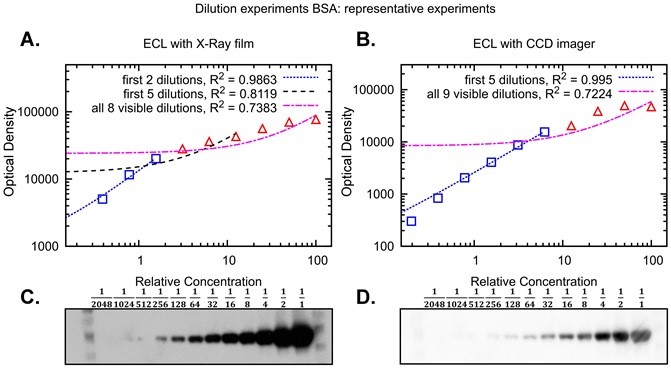New Guide to Data Interpretation
Western blotting is a widely used technique to detect specific proteins. Although considered a semi-quantitative method, the results are often interpreted quantitatively. Scientific articles often do not specify how researchers quantified these results and how they compared biological replicates for statistical testing.
SBI Deputy Director, Prof Boris Kholodenko and his team in Systems Biology Ireland have described how results of statistical testing applied to western blot data are affected by the choice of normalisation strategy applied to the data. They have created a step-by-step guide to help scientists choose the most appropriate normalisation strategy for their particular study.
Normalisation strategies transform or manipulate data to allow quantitative comparison of biological replicates. The Kholodenko group used mathematical models to simulate the effects of normalisation and actual experimental data to corroborate the results.
“We clarified the quantitative use of western blot data and how the normalisation strategy applied to the data affects the statistical testing, possibly increasing false positives or false negatives”, explained Dr Andrea Degasperi from the Kholodenko group.
Western blotting provides experimental evidence that supports a given hypothesis and is also used to validate data obtained from other techniques. Clarifying its quantitative use for decision making or statistical testing is necessary.
The Kholodenko group hope their study findings will not only act as a reference for scientists but also encourage them to include this critical information about data interpretations in published articles.
Journal reference:
A. Degasperi, M. R. Birtwistle, N. Volinsky, J. Rauch, W. Kolch, B. N. Kholodenko. Evaluating Strategies to Normalise Biological Replicates of Western Blot Data. PLoS ONE, 9(1): e87293. doi:10.1371/journal.pone.0087293, 2014.

Figure: Effects of normalisation on false positives and false negatives when applying t-test for equality of the mean. (A) We consider responses to eight conditions with log-normal distributions with CV of 0.2 and means of the conditions from 1 to 8 equal to: 1, 2, 2, 4, 7, 7, 18, 18. A number n = 5 of sampled replicates are obtained from these distributions and normalised using the normalisations above. Using these replicates before and after normalisation, conditions are tested using a two-tailed t-test with threshold p-value of 0.05. We repeat this procedure a large number of times and estimate the percentage of false positives. (B) In analogy with (A), we estimate the number of false negatives considering means of the conditions from 1 to 8 equal to: 1, 2, 3, 4, 7, 10.5, 18, 27. Notice that for a fair comparison, when testing two conditions, one has a mean that is always 2/3 the mean of the other, e.g. Condition 5 has mean 7 and Condition 6 has mean 10.5, with 7/10.5 = 2/3.

